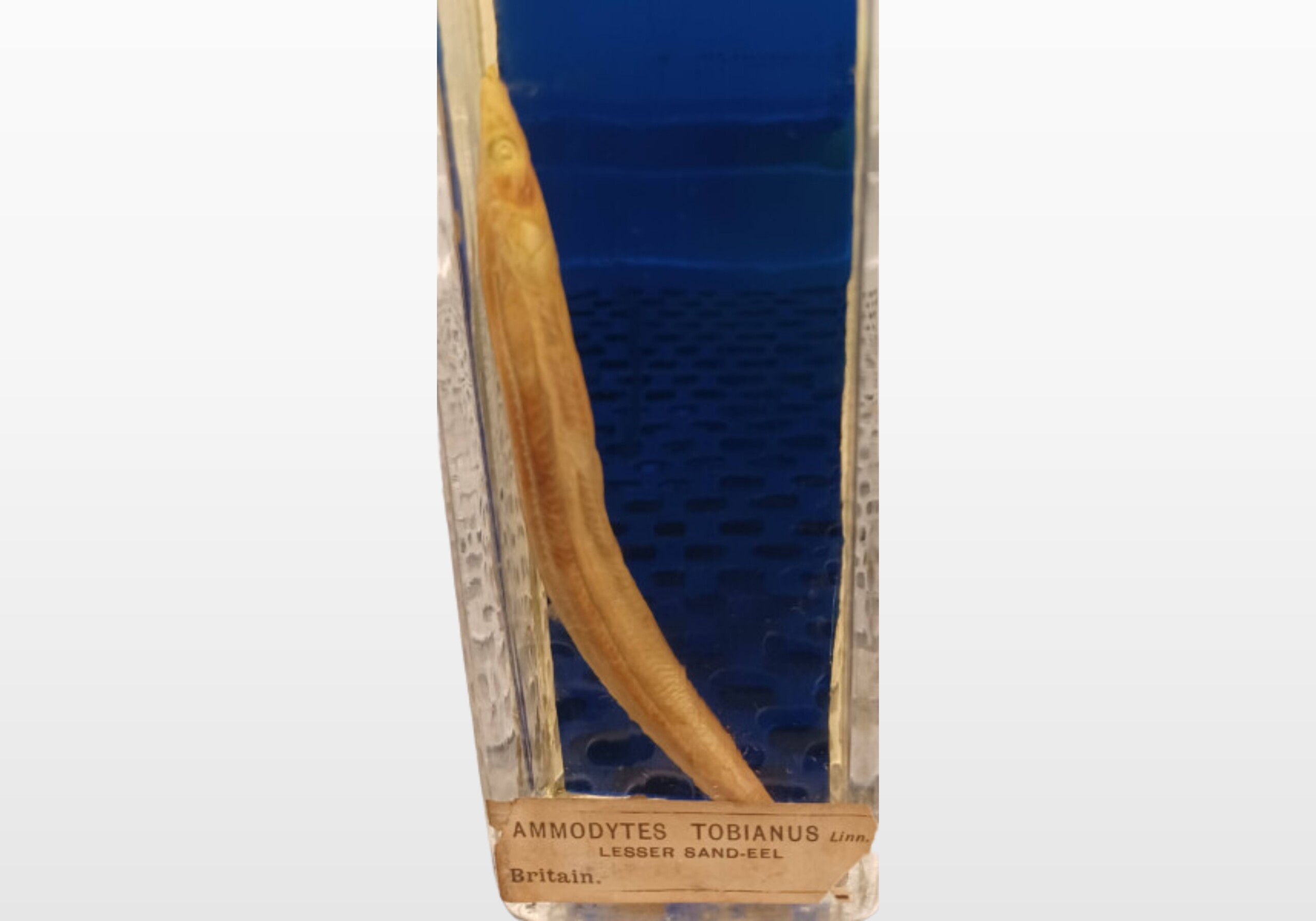
in Italiano / Italian translated by Gaetana Trippetti
This object has been translated into 5 different languages by 5 different users
I cicerelli minori sono molto importanti come fonte di nutrimento nei mari circondanti il Regno Unito poiché costituiscono la maggior parte della dieta di uccelli marini come ad esempio le pulcinelle di mare, e di pesci più grandi come ad esempio gli sgombri, ed anche di mammiferi come le focene. I cicerelli minori si spostano in grandi banchi durante il periodo compreso fra Aprile e Settembre, e trascorrono i mesi autunnali ed invernali sotto la sabbia, per poi emergere prima di depositare le uova.
Dal momento che la temperatura degli oceani sta cambiando, gli scienziati ritengono che ci sia pericolo che i cicerelli minori possano diminuire in numero. La tempistica della schiusa delle uova nel corso dell’anno è molto specifica allo scopo di permettere alle cieche di nutrirsi, ed altre specie animali dipendono così tanto dai cicerelli minori che se la schiusa stessa è fuori sincrono possono esserci delle consequenze.
Hai notato nel corso dell’anno qualcosa che accade in un periodo quando non accadeva prima, as esempio quando si vedono le prime farfalle, oppure quando i fiori cominciano a sbocciare?
Do you have something you’d like to say, in your own language or English, about the object or translation? We’d like to hear what you think.
Translations are community-sourced and for anyone to participate in, however you use your language. For more information, see Community Guidelines.
24 Nov, 2023
I grew up near a large lake in Umbria, Italy (Lago Trasimeno, or Lake Trasimene in English) and eels were part of our diet. Quite a large part, actually. I know it might gross out some of you, but we used to eat pasta with small eels (“ceriole” in our dialect), cut into pieces and cooked in a tomato sauce, and for our New Year’s Eve dinner (“il cenone di San Silvestro”) we always had “capitone”, a very big eel which quite frankly looked like a large snake! It was nevertheless delicious, cut into large chunks, seasoned with bay leaves and spit-roasted. Nowadays the only eels I get to eat are the jellied variety. I recommend Margate and Herne Bay for the best jellied eels in the world! Have you ever eaten eels?